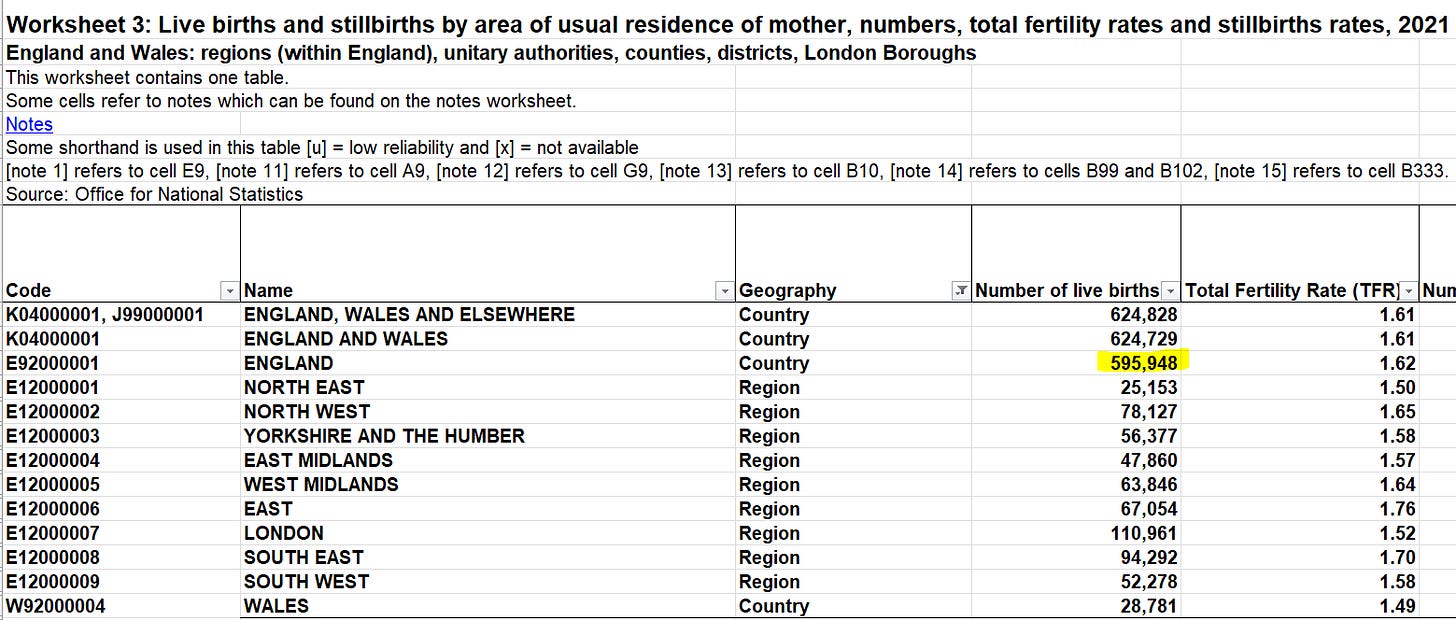In yesterday’s post , a reader pointed out that the number of births reported in 2022 were far less than in 2021, as can be seen in this table:
The 2022 months are all in the 30-thousands, while the 2021 numbers are in 40-thousands. I wanted to check whether this was something that should alarm us, or whether it is inline with the trend of lower birth rates happening in most of advanced economies of the world.
In order to look into this, I needed to find data on how many births there were in the UK over a number of years. A couple of sources were explored:
From ONS, Births in England and Wales: summary tables . This gives an annual snapshot of a number of statistics within the UK.
From ONS, Birth Characteristics. This provides monthly information on births (although not broken down by geography).
As I tried to analyze this data, I ran into a problem and I am hoping perhaps one of my well-informed readers might be able to help.
From the table above, the total number of births for 2021 appears to be 528,527. The note indicates that some women might not be included, but only a small number. I believe this number only includes England (not Wales). On the other hand, when I look at the summary table for 2021 from ONS, we see:
As you can see, the ONS reports 595,948 live births in England for 2021. Now, I can understand some differences in reporting, but not 67K births! Based on some other reporting, I tend to think the ONS number is more accurate, but how in the world can the UKHSA be missing nearly 70K births in 2021? Any ideas are welcome. Reconciling this might lead to an interesting analysis of birth rates for 2022 compared to past years. Thanks!
UPDATE
Thanks to reader cm27874 who correctly points to the fact that the UKHSA is reporting on mothers, while the ONS represents births. A logical reason this might differ is if a mother has multiple births… 1 mother with twins = 2 births. Below is data from 2020 that we can look at to see if this closes the gap:
You can see in 2020 there were 8,726 mothers who had more than 1 birth (17,444 births total). Therefore, we can estimate that the UKHSA data on # of mothers should be increased by somewhere near 17,444-8,726 = 8,718 to estimate total number of births. This is significant but nowhere near the 67K births that seemed to be missing when comparing to ONS data. More ideas welcome!







I had the idea that "women giving birth" might count mothers of twins only once. However, the multiple birth rate for England and Wales is around 1.5%, which stays in the 4-digit range.
https://www.statista.com/statistics/971604/england-and-wales-multiple-birth-rate/
Another fun fact: the numbers for 2021 of women giving birth in the week 35 report are *lower* than in the week 31 report (there, the sum is 529,342).
Thanks for pursuing this!